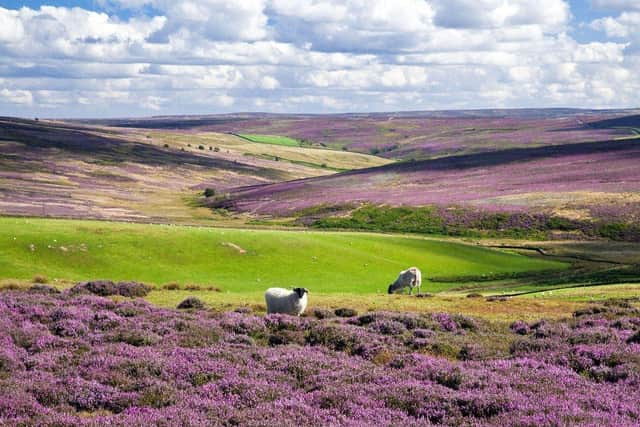25-metre phone mast to be built beside Cleveland Way in North York Moors National Park because signal is 'essential'
Cornerstone Telecommunications has been granted consent for a dark green lattice mast with antennas, dishes and remote radio heads on Coate Moor, Kildale, as part of a mast-sharing agreement between mobile operators and the Government to deliver coverage to areas not considered commercially viable.
A meeting of the national park authority’s planning committee was told the lightweight structure would be partly see-through from long and medium distance views and its proposed colouring would help its assimilation into the wider forestry setting on the Cleveland Way route.
Advertisement
Hide AdAdvertisement
Hide AdWhile a spokesman for the firm said it had reduced the height of the mast by five metres after listening to residents’ concerns, Kildale Parish Meeting, the Council for the Protection of Rural England and residents stated the mast would be “an adverse landscape intrusion”.


The meeting heard claims the mast would be visible from a significant distance, and would be within views of Roseberry Topping and Captain Cook’s monument.
In letters to the authority some residents had stated the wider digital connectivity community benefits would not outweigh the landscape harm of the mast, which they did “not wish to be able to see the mast when going about their daily business”.
Nevertheless, members were told improved digital connectivity had been raised at parish forums for over a decade and the park authority’s leading aims included to find local solutions to ensure superfast broadband and mobilephone coverage was available to every household in the national park by 2030.
Advertisement
Hide AdAdvertisement
Hide AdThe meeting heard Kildale had been a target area for coverage for North Yorkshire Council many years and the funding for shared rural network projects would end soon.
Officers warned it may be decades before replacement funding becomes available.
They added while the top six metres of the mast would be visible above the treeline when viewed from Kildale, the impact would be substantially reduced in longer distance views from the more elevated moorland above the dale.
Officers concluded the current and future digital connectivity benefits to the local community and visitors spanned from online, health and education to the local economy and social contact, which outweighed “modest visual harm”.
Advertisement
Hide AdAdvertisement
Hide AdThe authority’s chairman, Jim Bailey, said he was concerned about issues residents had raised and that he did not accept claims that the mast would future-proof mobile services for the next two decades.
He said the area had an adequate mobile signal through EE that was used by the emergency services adding “as far as internet is concerned fibre broadband is the way forward.”
Mr Bailey said: “It isn’t about maintaining those functions. It is about giving a wider choice of connectivity into the market. Masts are functions of modern human needs and they are not for ever. This stuff may become obselete.”
Nevertheless, a majority of members agreed the benefits of the shared rural network mast would outweigh its negative impact on the protected landscape.
